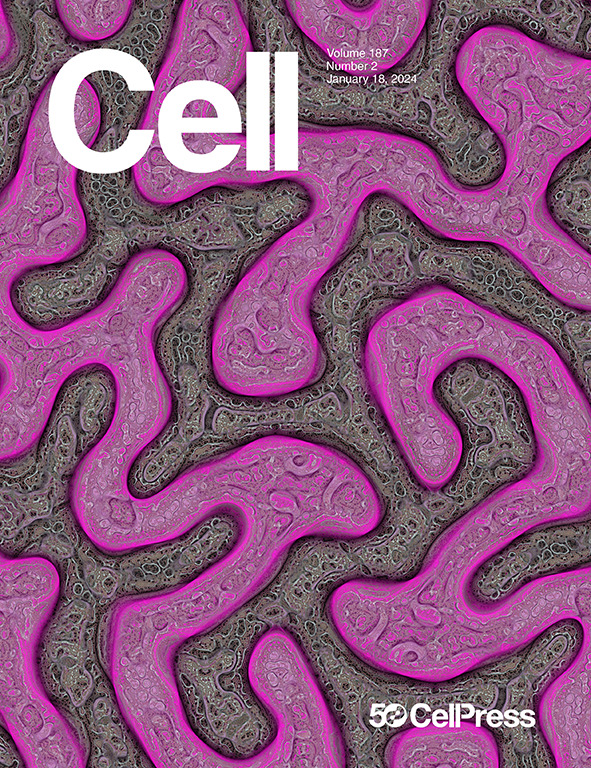Engineering yeast multicellular behaviors via synthetic adhesion and contact signaling
IF 42.5
1区 生物学
Q1 BIOCHEMISTRY & MOLECULAR BIOLOGY
引用次数: 0
Abstract
Multicellular coordination enhances biological complexity, yet the widely used yeast Saccharomyces cerevisiae possesses limited multicellular capabilities. Here, we expand the possibilities for engineering multicellular behaviors in yeast by developing modular toolkits for two key mechanisms in multicellularity, contact-dependent signaling and specific cell-cell adhesion. MARS (mating-peptide anchored response system) enables contact-dependent signaling via surface-displayed peptides and G protein-coupled receptors, mimicking juxtacrine communication, while Saccharomyces SATURN (adhesion toolkit for multicellular patterning) uses adhesion-protein pairs for the creation of programmable cell aggregation patterns. Combining these allows the construction of multicellular logic circuits, equivalent to developmental programs that lead to cell differentiation based on local population. We further created JUPITER (juxtacrine sensor for protein-protein interaction), a genetic sensor based on MARS and SATURN, for assaying protein-protein interactions and selecting high-affinity nanobody binders. Collectively, these toolkits present versatile building blocks for constructing complex, user-defined multicellular yeast systems and expand the scope of its biotechnological applications.

通过合成粘附和接触信号改造酵母多细胞行为
多细胞协调提高了生物的复杂性,但广泛使用的酵母酵母具有有限的多细胞能力。在这里,我们通过开发针对多细胞性、接触依赖信号和特异性细胞-细胞粘附两种关键机制的模块化工具包,扩大了酵母多细胞行为工程的可能性。MARS(配对肽锚定反应系统)通过表面显示的肽和G蛋白偶联受体实现接触依赖的信号传导,模拟近肽通信,而Saccharomyces SATURN(多细胞模式的粘附工具包)使用粘附蛋白对创建可编程的细胞聚集模式。将这些结合起来,就可以构建多细胞逻辑电路,相当于根据当地人口导致细胞分化的发育程序。我们进一步创建了JUPITER(蛋白质-蛋白质相互作用的近肽传感器),这是一种基于MARS和SATURN的基因传感器,用于分析蛋白质-蛋白质相互作用并选择高亲和力的纳米体结合物。总的来说,这些工具包为构建复杂的、用户定义的多细胞酵母系统提供了通用的构建模块,并扩大了其生物技术应用的范围。
本文章由计算机程序翻译,如有差异,请以英文原文为准。
求助全文
约1分钟内获得全文
求助全文
来源期刊

Cell
生物-生化与分子生物学
CiteScore
110.00
自引率
0.80%
发文量
396
审稿时长
2 months
期刊介绍:
Cells is an international, peer-reviewed, open access journal that focuses on cell biology, molecular biology, and biophysics. It is affiliated with several societies, including the Spanish Society for Biochemistry and Molecular Biology (SEBBM), Nordic Autophagy Society (NAS), Spanish Society of Hematology and Hemotherapy (SEHH), and Society for Regenerative Medicine (Russian Federation) (RPO).
The journal publishes research findings of significant importance in various areas of experimental biology, such as cell biology, molecular biology, neuroscience, immunology, virology, microbiology, cancer, human genetics, systems biology, signaling, and disease mechanisms and therapeutics. The primary criterion for considering papers is whether the results contribute to significant conceptual advances or raise thought-provoking questions and hypotheses related to interesting and important biological inquiries.
In addition to primary research articles presented in four formats, Cells also features review and opinion articles in its "leading edge" section, discussing recent research advancements and topics of interest to its wide readership.
 求助内容:
求助内容: 应助结果提醒方式:
应助结果提醒方式:


